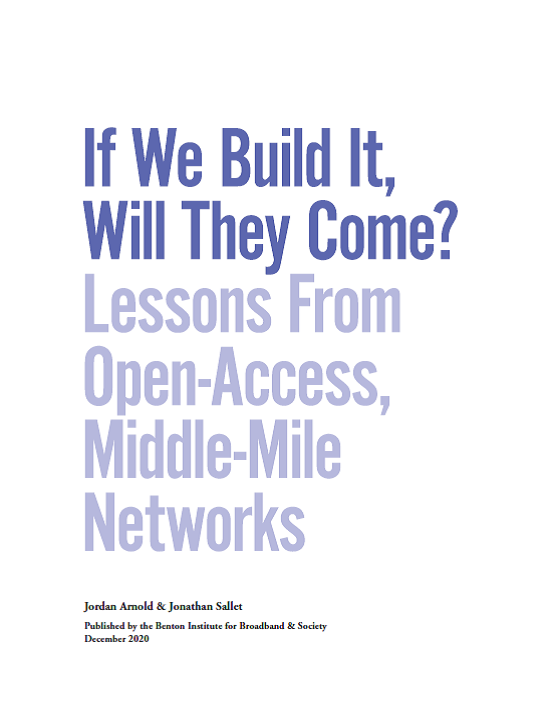If We Build It, Will They Come? Lessons from Open-Access, Middle-Mile Networks
Written by Jordan Arnold and Jonathan Sallet
Residential and small-business customers have too few options for fixed, robust broadband service, what we refer to as “High-Performance Broadband.” Fixing our deployment and competition problems requires the construction of new broadband networks. In other words, we need more competition, and we need more broadband deployment. This policy brief concentrates on one solution—the construction of open-access, middle-mile networks.
“Open-access” means the network permits any broadband provider to connect to the network on nondiscriminatory terms and conditions. “Middle-mile” networks reach from national and major regional internet backbones to a local connection site (which could be a school or library but which could not be, by definition, a residence).
Thus, middle-mile networks bring data to and from an internet backbone where, in turn, traffic is handed off to the “last mile” network that connects to, say, a home.
This policy brief explains why and how the federal government should support the construction of open-access, middle-mile networks and how that support can be structured. It provides background on different kinds of open-access, middle-mile networks across the nation. It proposes the structure for a federal open-access, middle-mile grant program, incorporating the lessons we have learned about what boosts the chance for open-access, middle-mile success. And it focuses on the reasons the construction of open-access, middle-mile networks furthers deployment and competition.
Additional Reading:
Open-Access, Middle-Mile Networks: Deployment and Competition


